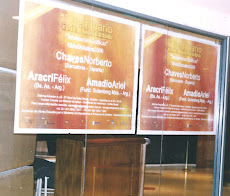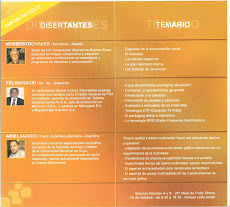
lunes
CODIGOS DE BARRA - GUIA DE COLORES LEGIBLES Y NO LEGIBLES - BLOG 1
GUIA DE COLORES DE CODIGOS DE BARRAS LEGIBLES Y NO LEGIBLES, PARA PRODUCTOS ALIMENTICIOS
Existen diversos sistemas de lectura o scanners para la lectura de los Códigos de Barras, que dependen del tipo de fuente lumínica, la forma de lectura y el destino del scanner o lector.
Los scanners para códigos de barra, operan en la longitud de onda visible comprendida entre 400 nm (violeta) y los 700 nm (rojo), y el ultravioleta cercano (no visible) mayor a 700 nm. Es decir trabajan en un rango de longitud de onda que va del color rojo visible hasta el infrarrojo cercano, reflejando y absorbiendo la luz en las barras y espacios del código, dentro de los colores y contrastes.
Estos escanners leen los códigos de barras, reconociendo el contrate entre áreas clara y oscuras del código.
Aunque el negro y el blanco son los colores de más alto contraste entre si, otros colores son también efectivos y complementan el diseño grafico del packaging.
Si bien esta guía de colores es un instrumento de consulta fundamental, se recomienda realizar pruebas de color y de campo si se va a utilizar tonos marrones, rojos o anaranjados, a fin de verificar que el contraste sea adecuado a fin de obtener una buena lectura.
De igual manera proceder en códigos truncados o sustratos difíciles a fin de determinar el fm necesario (tema que abordaremos a la brevedad).
Existen diversos sistemas de lectura o scanners para la lectura de los Códigos de Barras, que dependen del tipo de fuente lumínica, la forma de lectura y el destino del scanner o lector.
Los scanners para códigos de barra, operan en la longitud de onda visible comprendida entre 400 nm (violeta) y los 700 nm (rojo), y el ultravioleta cercano (no visible) mayor a 700 nm. Es decir trabajan en un rango de longitud de onda que va del color rojo visible hasta el infrarrojo cercano, reflejando y absorbiendo la luz en las barras y espacios del código, dentro de los colores y contrastes.
Estos escanners leen los códigos de barras, reconociendo el contrate entre áreas clara y oscuras del código.
Aunque el negro y el blanco son los colores de más alto contraste entre si, otros colores son también efectivos y complementan el diseño grafico del packaging.
Si bien esta guía de colores es un instrumento de consulta fundamental, se recomienda realizar pruebas de color y de campo si se va a utilizar tonos marrones, rojos o anaranjados, a fin de verificar que el contraste sea adecuado a fin de obtener una buena lectura.
De igual manera proceder en códigos truncados o sustratos difíciles a fin de determinar el fm necesario (tema que abordaremos a la brevedad).
SUITABLE ASPECTS ABOUT COLORMETRICS AND DENSITOMETERS
The colorimeter enhances quality control in the printing industry.

The colorimeters measures according to the tristimulus method and meets the DIN 5033 and DIN 6174 standards. It also meets the published recommendations of CIE and other international standards. It measures and evaluates all current colormetric coefficients and their differences.









It combines the handiness of a densitometer with the possibilities of colormetric measuring procedures of large laboratory instruments. No peripheric instruments are needed to execute the measuring and evaluation functions. It has the same form and structure as the other densitometers and colormetric sens. Thus the user is immediately familiar with those which eases the introduction to the complex measuring procedures of colormetrics.
However, the colorimeter is fundamentally different from all densitometers currently used in the printing industry. It measures colors and color differences according to the standardized procedures of colormetrics.
Colormetrics gives the necessary objective measurements wherever color tones are produced by mixing or printing process inks, according to predetermined targets. Visual judgement is supplemented by colormetric coefficients. Therefore, color tolerances can be determined by numerical values instead of by visual comparison with the target sheets. The difficulty of expressing all possible variances - color tone, saturation and lightness - in target sheets continuously within a tolerance range is eliminated. Subjective guesswork is replaced by measurements which can be repeated at any time. Using these measurements, the expert can make exact corrections when mixing and printing inks.
Colormetrics gives the necessary objective measurements wherever color tones are produced by mixing or printing process inks, according to predetermined targets. Visual judgement is supplemented by colormetric coefficients. Therefore, color tolerances can be determined by numerical values instead of by visual comparison with the target sheets. The difficulty of expressing all possible variances - color tone, saturation and lightness - in target sheets continuously within a tolerance range is eliminated. Subjective guesswork is replaced by measurements which can be repeated at any time. Using these measurements, the expert can make exact corrections when mixing and printing inks.

The colorimeters measures according to the tristimulus method and meets the DIN 5033 and DIN 6174 standards. It also meets the published recommendations of CIE and other international standards. It measures and evaluates all current colormetric coefficients and their differences.

In order to obtain the differences of colormetric coefficients the target and the sample are measured one after the other. For further measurements the values of the target can be stored by simply pressing a button. Then only the new samples need be measured.
The colormetric coefficients are evaluated for both standard illuminants D 65 and C and for the viewing angles 10° and 2°. For the evaluation of printed colors, D 65 and 10° are preferred.
For the instrument calibration a white standard is used whose tristimulus values are known for the illuminants D 65 and C and for the viewing angles 10° and 2°. The tristimulus values of the white standard are stored in all densitometers and colormetrics. A simple calibration measurement on the white standard is sufficient if the calibration is to be renewed before beginning a series of measurements.
For the instrument calibration a white standard is used whose tristimulus values are known for the illuminants D 65 and C and for the viewing angles 10° and 2°. The tristimulus values of the white standard are stored in all densitometers and colormetrics. A simple calibration measurement on the white standard is sufficient if the calibration is to be renewed before beginning a series of measurements.
The interinstrument agreement of the colorimeters is obtained at the factory by reading in several color samples whose tristimulus values have been determined by spectrophotometric measurements at the "Bundesanstalt für Materialprüfung". The built-in correction program eliminates influences caused by the instrument itself and guarantees that all colorimeters deliver comparable values. Furthermore, the correction procedure enables its adaptation to instruments from other manufacturers, as far as the deviation of the other instruments does not exceed the correctable tolerance.

The brightness of the lamp, the temperature and other influences on the measuring accuracy are controlled and compensated for by continuous reference measurements. The 45° / 0° measuring geometry fulfills the recommendations of the standards. The annular illumination of the measuring head eliminates any influence of the texture of the printing carrier on the measuring result.
The colormetric works without a cable. It is equipped with rechargeable NiCd-batteries. Even the recording of the measurements is done cablefree. Every colorimeter has a built-in infrared transmitter. Just the press of a button, and all values and characteristics in the display are transferred via the infrared receiver or an IBM-compatible personal computer.
The colormetric works without a cable. It is equipped with rechargeable NiCd-batteries. Even the recording of the measurements is done cablefree. Every colorimeter has a built-in infrared transmitter. Just the press of a button, and all values and characteristics in the display are transferred via the infrared receiver or an IBM-compatible personal computer.
ANNEXED







Suscribirse a:
Entradas (Atom)










